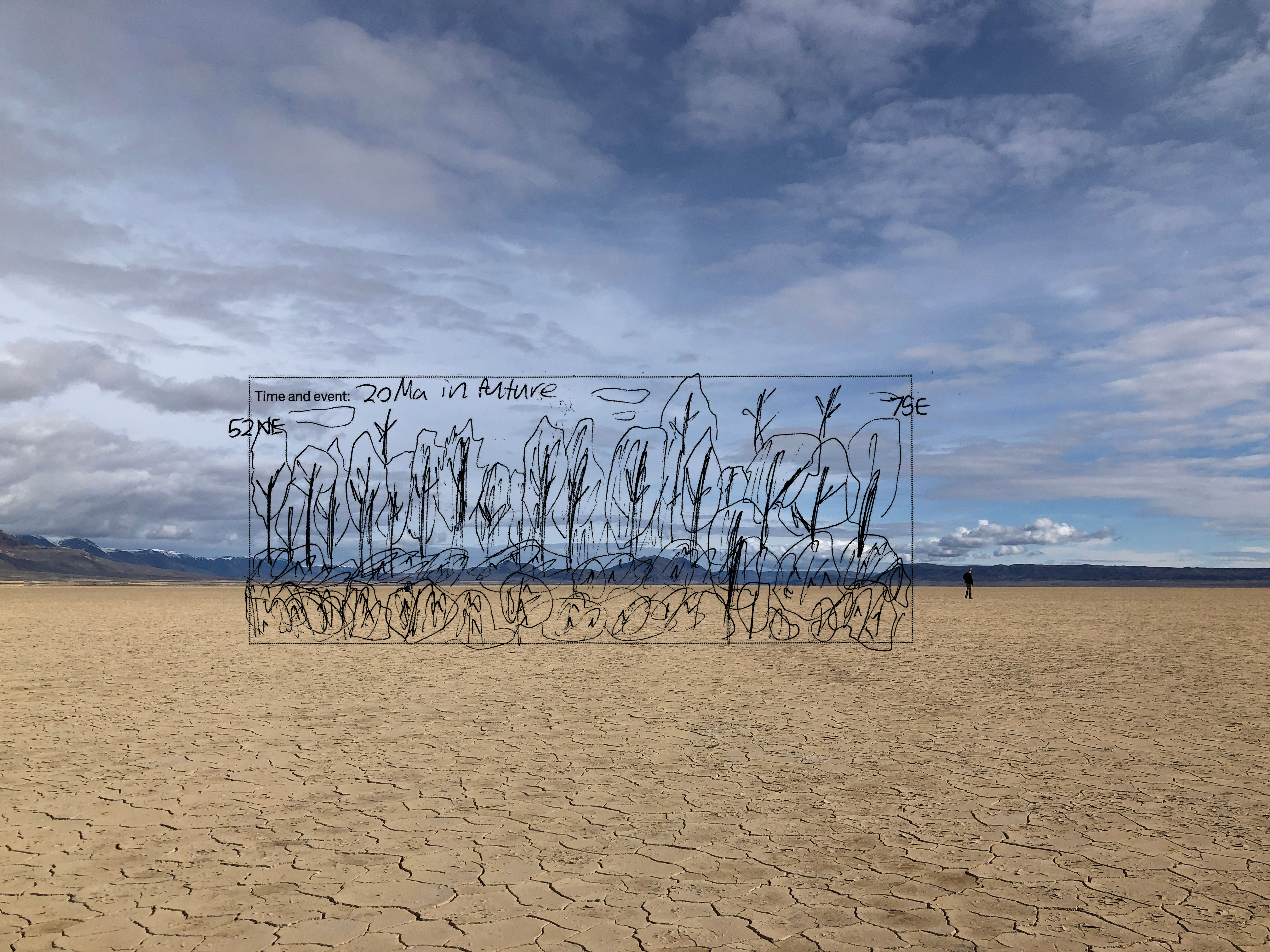Future Forests
Alvord Desert OR, 2020
In collaboration with John Bershaw
In March of 2020, I joined a Portland State University geology field trip to the Alvord Desert in Eastern Oregon as an Artist-in-Residence, hosted by faculty John Bershaw and Barry Walker. The class was primarily studying basin analysis, which, in layperson's terms, is about understanding the events that create landscapes of mountains and valleys. At the beginning of the trip, this was something I knew nothing about. On the long van ride from Portland, the undergraduate students patiently indulged my mundane questions.
I am interested in the ways people understand time—across cultures, academic disciplines, and phases of life. What we notice in a landscape can tell us a lot about our relationship to time. I believe we are always projecting the past and future when looking at a landscape and are often unaware of it. In this regard, geologists are particularly interesting because it is normal for them to look back across hundreds of millenia at the forces that shaped our planet. At the same time, they are not normally asked to look into the future at the same scale of time.
Geology students draw to help them identify the huge forces that shape the landscape, and to make sense of what they are seeing. As an artist, this was a natural starting point to explore these relationships with them. I led a series of exercises over the next few days, culminating with students choosing a point on the landscape and making three drawings of it. The first drawing was for the present day, and the second was for 20,000,000 years in the past. The third drawing was set 20,000,000 years into the future. The exercise was intended to make visible our projections of the future, often invisible, but always present.
In addition, I created a series of composite research images as part of the project that overlay site photographs with participants drawings.

 Geology student worksheet
Geology student worksheet
 Composite sketches featuring geology student artwork
Composite sketches featuring geology student artwork
